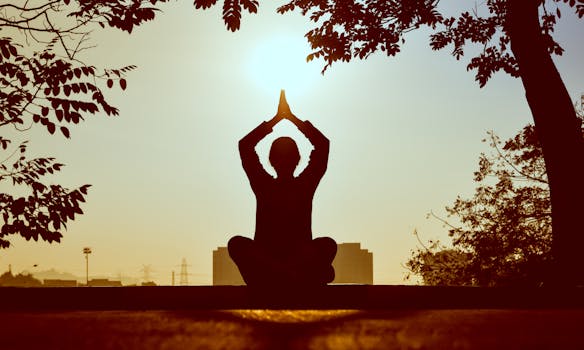
“
Mindfulness Practices for Stress Relief: Reduce Anxiety and Improve Well-being
Mindfulness practices for stress relief have become increasingly popular in recent years, and for good reason. Mindfulness is the practice of being present in the moment, paying attention to your thoughts, feelings, and sensations without judgment. By cultivating mindfulness, you can reduce stress and anxiety, improve your mood, and enhance your overall well-being. For more on enhancing your well-being, check out our guide to wellness.
What is Mindfulness?

Mindfulness is the practice of paying attention to the present moment, without judgment or distraction. It involves being aware of your thoughts, feelings, and physical sensations, and allowing them to pass without getting caught up in them. Mindfulness is not the same as meditation, although meditation can be a useful tool for cultivating mindfulness. Explore more about meditation in our SEO guide.
Benefits of Mindfulness for Stress Relief

Research has shown that mindfulness practices can have a positive impact on both physical and mental health. Some of the benefits of mindfulness for stress relief include:
- Reduced stress and anxiety
- Improved mood
- Enhanced cognitive function
- Better sleep
- Increased self-awareness
- Improved relationships
Mindfulness Practices for Stress Relief

There are many different mindfulness practices that can help with stress relief. Some of the most effective include:
- Meditation: Meditation involves focusing your attention on a single point, such as the breath, a mantra, or a physical sensation. Regular meditation practice can help reduce stress and anxiety by teaching you to focus your attention and calm your mind.
- Deep Breathing: Deep breathing involves taking slow, deep breaths in through the nose and out through the mouth. This can help calm the nervous system and reduce feelings of stress and anxiety.
- Yoga: Yoga combines physical movement with deep breathing and meditation techniques. It can help reduce stress and anxiety by promoting relaxation and improving mood.
- Body Scan: A body scan involves lying down or sitting comfortably and bringing your attention to different parts of the body, starting at the toes and working your way up to the head. This can help you become more aware of physical sensations and release tension.
- Walking Meditation: Walking meditation involves paying attention to the sensation of your feet touching the ground, the movement of your legs and arms, and the rhythm of your breath. This can help you cultivate mindfulness and reduce stress and anxiety.
How to Get Started with Mindfulness Practices for Stress Relief

Getting started with mindfulness practices for stress relief is easy. Here are a few tips:
- Start small: Begin with short periods of mindfulness practice, such as 5-10 minutes a day, and gradually increase as you become more comfortable with the practice.
- Find a quiet space: Identify a quiet, comfortable space where you can practice mindfulness without distraction.
- Use guided recordings: Guided recordings can be a helpful way to get started with mindfulness practice, as they provide instruction and guidance.
- Be patient: Mindfulness is a practice that takes time to develop. Be patient with yourself and remember that it’s okay if your mind wanders.
Conclusion

Mindfulness practices for stress relief are a powerful tool for reducing anxiety and improving overall well-being. By cultivating mindfulness, you can learn to manage stress and anxiety, improve your mood, and enhance your relationships. Remember to start small, be patient, and find a quiet space to practice. With regular practice, you can develop greater mindfulness and reduce stress and anxiety in your life. For more insights on personal growth, consider reading about unlocking your full potential.
See more:
https://www.mindful.org/
https://www.headspace.com/
https://www.calm.com/



